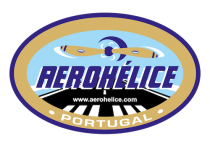Worldwide Ballast Water Treatment Industry to 2026 - Growth in the Volume of Seaborne Trade is Driving the Market - ResearchAndMarkets.com
The "Ballast Water Treatment Market - Growth, Trends, COVID-19 Impact, and Forecasts (2021 - 2026)" report has been added to ResearchAndMarkets.com's offering.
The Ballast Water Treatment Market is expected to grow at a CAGR of 32.7% over the forecast period 2020 to 2025.
Companies Mentioned
- Wartsila Oyj Abp
- Alfa Laval AB
- Xylem Inc.
- Evoqua Water Technologies LLC
- Calgon Carbon Corporation
- Mitsubishi Heavy Industries Ltd.
- Veolia Environnement S.A.
- atg UV Technology Ltd
- Headway Technology Co., Ltd.
- Trojan Marinex Inc.
- Ecochlor, Inc.
- JFE Engineering Corporation
- Optimarin AS
- Marenco Technology Group Inc.
- Hyde Marine, Inc.
Key Market Trends
Tankers by Type to Drive the Market
- The tankers segment is anticipated to observe a notable extension in the BWT market during the forecast period. It allows for easy installation and provides relatively more space. Japan, South Korea, and China account for primary tanker production.
- Tankers are remarkably important in the shipping industry as they serve to transport large amounts of chemicals, petroleum, crude oil, and LNG, among others, across the oceans and seas. The continuously growing crude oil industry is a significant determinant commanding global trade.
- According to UNCTAD, in 2019, less than a quarter of the world's bulk carriers were fitted with ballast water treatment systems. The penetration rate was slightly higher in oil tankers, with about 12% of these vessels treated their ballast water. In contrast to this, only 1% of passenger ships had systems in place for managing their ballast water.
- According to SEA\LNG, as of 2019, the fleet size of vessels propelled by liquified natural gas (LNG) worldwide was expected to grow across all segments. That year, the tanker segment had 44 operational vessels, with an additional 53 in the order book, over time, boosting the growth of the market.
- Vessel scrubbers are employed to remove nitrogen oxides (NOx), sulfur oxides (SOx), and other air pollutants from exhaust gases generated by engines. According to UNCTAD, in 2019, about 3.71% of container ships in the worldwide fleet were fitted with scrubbing systems.
- The penetration rate of scrubbing systems is expected to increase following the global cap on sulfur emissions coming into force from January 1, 2020, which will consequently fuel the growth of the market.
APAC to Dominate the Market
- APAC is anticipated to hold the largest size of the ballast water treatment market during the forecast period. The presence of a considerable number of ports and harbors for the trade of oil and chemicals, automotive components, electronic components, and devices, among others, contributes to the market growth in the APAC region.
- The region further offers different types of vessels, such as containers, tankers, and other cargo ships. Since the IMO has made it compulsory to install BWT systems in the vessel, it is presumed to drive BWT systems' demand. Moreover, current trade volumes and stringent IMO regulations have encouraged the growth of this industry in APAC.
- This region remains a key growth market for Ballast Water Treatment with an addition in ocean freight volumes from multiple countries such as China, India, and South Korea to other parts of the world. It is expected that growth in the ocean freight over the subsequent years, will result in the greater adoption of the Marine Environmental Protection program, which will encourage market growth.
- An increasing number of container tankers & ships and substantial trade volume in the region further supplement the regional growth.
Key Topics Covered:
1 INTRODUCTION
2 RESEARCH METHODOLOGY
3 EXECUTIVE SUMMARY
4 MARKET DYNAMICS
4.1 Market Overview
4.2 Marker Drivers
4.2.1 Growth in the Volume of Seaborne Trade
4.2.2 Government Actions Toward Marine Environmental Safety and Protection
4.3 Market Restraints
4.3.1 Storage of Disinfection By-products Generated Following Water Treatment
4.3.2 Costly Plan of Ballast Water Treatment Systems Coupled with Variations in IMO and USCG Regulations
4.4 Market Opportunities
4.4.1 Latest Laws to Boost the Demand for Ballast Water Treatment
4.5 Industry Attractiveness - Porter's Five Forces Analysis
4.6 Industry Value Chain Analysis
4.7 Impact of COVID-19 on the Ballast Water Treatment Market
5 MARKET SEGMENTATION
5.1 By Type
5.2 Geography
5.2.1 North America
5.2.2 Europe
5.2.3 Asia-Pacific
5.2.4 Rest of the World
6 COMPETITIVE LANDSCAPE
6.1 Company Profiles
7 INVESTMENT ANALYSIS
8 FUTURE OF THE MARKET
For more information about this report visit https://www.researchandmarkets.com/r/t9t2j
View source version on businesswire.com: https://www.businesswire.com/news/home/20210506005863/en/




